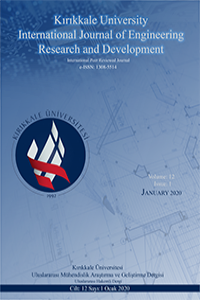Abstract
The embedment of subsea pipelines in soft |
References
- Allen, D.W., Lammert, W.F. and Hale, J.R. (1989). Submarine Pipeline On-Bottom Stability: Recent AGA Research. Proc. 21. Offshore Tech. Conf. OTC 6055.
- Bruton, D. A. S., White, D. J., Langford, T. and Hill, A. J. (2009). Techniques for assessment of pipe/soil interaction forces for future deepwater developments. Proc. Offshore Tech. Conf. OTC 20096.
- DNVGL-RP-F114. 2017. (2017). Pipe-soil Interaction for Submarine Pipelines. DNVGL-RP-F114, Det Norske Veritas.
- Dunlap, W.A., Bhojanala, R.P. and Morris, D.V. (1990). Burial of Vertically Loaded Offshore Pipelines in Weak Sediments. Proc. 22. Offshore Tech. Conf., May 7-10, Houston, Texas, OTC 6375, 263-270.
- Hale, J.R., Lammert, W.F. and Jacobsen, V. (1989). Improved Basis for Static Stability Analysis and Design of Marine Pipelines. Proc. 21. Offshore Tech. Conf. OTC 6059.
- Martin, CM., White, D.J. (2012). Limit analysis of the undrained bearing capacity of offshore pipelines. Geotechnique, Vol. 62, No. 9, 847-863.
- Murff, J.D., Wagner, D.A., and Randolph, M.F. (1989). Pipe Penetration in Cohesive Soil. Geotechnique 39(2), 213-229.
- Randolph, M. F. and White, D. J. (2008). Pipeline Embedment in Deep Water: Processes and Quantitative Assessment. In Proc. of the Offshore Tech. Conf., 5-8 May, Houston, Texas, OTC 19128.
- Terzaghi, K. (1943). Theoretical Soil Mechanics, John Wiley & Sons, Inc.
- Verley, R. and Lund, K.M. (1995). A Soil Resistance Model for Pipelines Placed on Clay Soils. ASME J. Offshore Mechanics and Arctic Engineering, Vol. V, pp. 225-232.
- Wagner, D.A., Murff, J.D., Brennodden, H. and Sveggen, O. (1987). Pipe-Soil Interaction Model. Proc. 19. Offshore Tech. Conf., OTC 5504.
- Westgate, Z.J., White, D.J., Randolph, M. F. and Brunning, P. (2010). Pipeline Laying and Embedment in Soft Fine-Grained Soils: Field Observations and Numerical Simulations. In Proc. Offshore Tech. Conf., Houston, Texas, OTC 20407.
- White, D. J., Westgate, Z. J., Ballard, J-C., de Brier, C. and Bransby, M. F. (2015). Best Practice Geotechnical Characterization and Pipe-Soil Interaction Analysis for HPHT Pipeline Design. In Proc. Offshore Tech. Conf., 4-7 May, Houston, Texas. OTC-26026-MS.
- White, D. J., Clukey, E. C., Boylan, N. P, Bransby, M. F., Zakeri, A., Hill, A. J. and Jaeck, C. (2017). The State of Knowledge of Pipe-Soil Interaction for On-Bottom Pipeline Design. In Proc. Offshore Tech. Conf., 1-4 May, Houston, Texas. OTC-27623-MS.
- Wolfram, W.R., Getz, J.R. and Verley, R.L.P. (1987). PIPESTAB Project: Improved Design Basis for Submarine Pipeline Stability. Proc. 19. Offshore Tech. Conf. OTC 5501.
- Zhao, B., Gao, F., Liu, J. and Wu, Y. (2009). Vertical Bearing Capacity of a Partially-Embedded Pipeline on Tresca Soils. In Proc. International Offshore and Polar Engineering Conf., June 21-26, Osaka, Japan, pp.469-473.
Abstract
References
- Allen, D.W., Lammert, W.F. and Hale, J.R. (1989). Submarine Pipeline On-Bottom Stability: Recent AGA Research. Proc. 21. Offshore Tech. Conf. OTC 6055.
- Bruton, D. A. S., White, D. J., Langford, T. and Hill, A. J. (2009). Techniques for assessment of pipe/soil interaction forces for future deepwater developments. Proc. Offshore Tech. Conf. OTC 20096.
- DNVGL-RP-F114. 2017. (2017). Pipe-soil Interaction for Submarine Pipelines. DNVGL-RP-F114, Det Norske Veritas.
- Dunlap, W.A., Bhojanala, R.P. and Morris, D.V. (1990). Burial of Vertically Loaded Offshore Pipelines in Weak Sediments. Proc. 22. Offshore Tech. Conf., May 7-10, Houston, Texas, OTC 6375, 263-270.
- Hale, J.R., Lammert, W.F. and Jacobsen, V. (1989). Improved Basis for Static Stability Analysis and Design of Marine Pipelines. Proc. 21. Offshore Tech. Conf. OTC 6059.
- Martin, CM., White, D.J. (2012). Limit analysis of the undrained bearing capacity of offshore pipelines. Geotechnique, Vol. 62, No. 9, 847-863.
- Murff, J.D., Wagner, D.A., and Randolph, M.F. (1989). Pipe Penetration in Cohesive Soil. Geotechnique 39(2), 213-229.
- Randolph, M. F. and White, D. J. (2008). Pipeline Embedment in Deep Water: Processes and Quantitative Assessment. In Proc. of the Offshore Tech. Conf., 5-8 May, Houston, Texas, OTC 19128.
- Terzaghi, K. (1943). Theoretical Soil Mechanics, John Wiley & Sons, Inc.
- Verley, R. and Lund, K.M. (1995). A Soil Resistance Model for Pipelines Placed on Clay Soils. ASME J. Offshore Mechanics and Arctic Engineering, Vol. V, pp. 225-232.
- Wagner, D.A., Murff, J.D., Brennodden, H. and Sveggen, O. (1987). Pipe-Soil Interaction Model. Proc. 19. Offshore Tech. Conf., OTC 5504.
- Westgate, Z.J., White, D.J., Randolph, M. F. and Brunning, P. (2010). Pipeline Laying and Embedment in Soft Fine-Grained Soils: Field Observations and Numerical Simulations. In Proc. Offshore Tech. Conf., Houston, Texas, OTC 20407.
- White, D. J., Westgate, Z. J., Ballard, J-C., de Brier, C. and Bransby, M. F. (2015). Best Practice Geotechnical Characterization and Pipe-Soil Interaction Analysis for HPHT Pipeline Design. In Proc. Offshore Tech. Conf., 4-7 May, Houston, Texas. OTC-26026-MS.
- White, D. J., Clukey, E. C., Boylan, N. P, Bransby, M. F., Zakeri, A., Hill, A. J. and Jaeck, C. (2017). The State of Knowledge of Pipe-Soil Interaction for On-Bottom Pipeline Design. In Proc. Offshore Tech. Conf., 1-4 May, Houston, Texas. OTC-27623-MS.
- Wolfram, W.R., Getz, J.R. and Verley, R.L.P. (1987). PIPESTAB Project: Improved Design Basis for Submarine Pipeline Stability. Proc. 19. Offshore Tech. Conf. OTC 5501.
- Zhao, B., Gao, F., Liu, J. and Wu, Y. (2009). Vertical Bearing Capacity of a Partially-Embedded Pipeline on Tresca Soils. In Proc. International Offshore and Polar Engineering Conf., June 21-26, Osaka, Japan, pp.469-473.
Details
| Primary Language | English |
|---|---|
| Subjects | Engineering |
| Journal Section | Articles |
| Authors | |
| Publication Date | January 31, 2020 |
| Submission Date | September 30, 2019 |
| Published in Issue | Year 2020 Volume: 12 Issue: 1 |
All Rights Reserved. Kırıkkale University, Faculty of Engineering and Natural Science.


